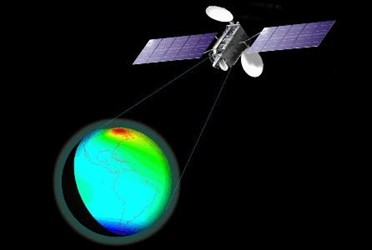NASA Piggybacks Spectrograph On Comm Satellite To Study Ionosphere's RF Disruption
By Jof Enriquez,
Follow me on Twitter @jofenriq

The National Aeronautics and Space Administration (NASA) is set to launch its Global-scale Observations of the Limb and Disk (GOLD) mission to study Earth's near-space environment and better understand what disrupts radio signals and satellites used for communications and the Global Positioning System (GPS) for radio navigation.
GOLD is the first NASA mission to fly a hosted payload — an ultraviolet (UV) imaging spectrograph — on a commercial geostationary communications satellite, SES-14, when it launches on Jan. 25 from a base in French Guiana. As a spectrograph, GOLD breaks light down into its component wavelengths, measuring their intensities to understand individual chemical elements in the upper atmosphere, which is influenced by space weather, as well as weather from below.
It is designed for a two-year nominal mission at geostationary orbit some 22,000 miles above the Western Hemisphere, with a potential extended mission.
"Gathering observations from geostationary orbit above the Western Hemisphere, GOLD measures the temperature and composition of neutral gases in Earth’s thermosphere. This part of the atmosphere co-mingles with the ionosphere, which is made up of charged particles. Both the Sun from above and terrestrial weather from below can change the types, numbers, and characteristics of the particles found here — and GOLD helps track those changes," states the GOLD mission overview.
Previously, scientists believed that geomagnetic storms triggered by the sun were the major disruptors of the upper atmosphere. They now know that events like tsunamis and hurricanes can provoke changes, too, and want to explore this phenomenon further.
"Tsunamis create waves in the air, and they move upwards, which could cause changes at the boundary between Earth and space," said Sarah Jones, GOLD mission scientist, reports CNN. "GOLD is studying how to tease out effects of sun above and Earth below."
Studying the little-understood ionosphere is important because radio frequency must make its way through this layer, and changes in the ionosphere can disrupt radio signals being used in a plethora of ways, ranging from aircraft and ship navigation, military communication, down to cellphone technology and personal GPS, noted FedScoop.
GOLD scientists are particularly interested in the cause of dense, unpredictable bubbles of charged gas that appear over the equator and tropics (equatorial plasma density irregularities) blamed for some communication problems.
The GOLD mission is the first of two NASA missions to study the ionosphere. The second one, the Ionospheric Connection Explorer (ICON), launches later in 2018. The ICON spacecraft will be at low-Earth orbit at about 350 miles above Earth, so it will provide a closer view of the upper atmosphere ideal for "capturing detailed remote and in situ data on the forces that shape this area." GOLD, on the other hand, at some 22,000 miles above, will "build up a full-disk view of the ionosphere and upper atmosphere every half hour, providing detailed large-scale measurements of related processes."
